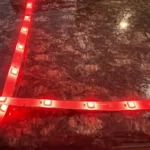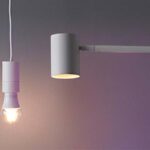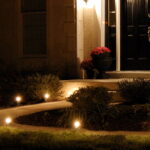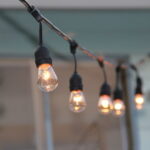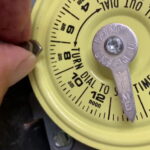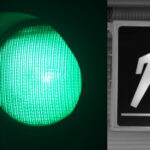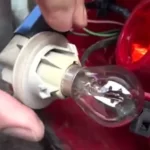How Many Lumens Do I Need For Outdoor Lighting? See Answer
Make sure to choose lighting that enhances the area rather than interferes with the design when it comes to lighting the area around your home. The quantity of lumens you require will change depending on the kind of lighting you select.
How many lumens do I need for outdoor lighting? For outdoor lighting, 12 to 1,300 lumens is the ideal lumen range. You need between 50 and 700 lumens for outdoor landscape lighting. Location affects the level of brightness that most people prefer.
For all of the most popular outdoor lighting options, we’ve provided a detailed breakdown of our recommended lumen ranges here. We’ve also included information on the specific light types that will contribute to creating a classy atmosphere outside your home. Let’s now clarify this subject.
For more information, continue reading.
Table of Contents
What Is A Lumen?
To put it simply: lumens measure light or brightness, whereas watts measure energy. When I was growing up, a lamp’s power was always measured in watts; the higher the wattage, the brighter the lamp. That is no longer the case because of the development of LED lights. LED lights can generate more lumens while using less energy thanks to their energy efficiency. For instance, a 6.5 watt LED lamp will produce about the same amount of lumens as a 50 watt halogen bulb.
Lumens, which measure the amount of light the human eye can perceive, are now used to describe a bulb’s brightness in order to avoid confusion. No matter how much energy is used, the lamp will be brighter the higher the lumens. For those who are more accustomed to using watts, this system might take some getting used to, but it will make comparing light output between conventional lamps and LED lamps easier.
However, there is a warning: not all garden lights will emit as many visible lumens as what is stated on the box. The bulb’s output is described by the indicated lumens, but how much of that output is actually visible depends on the lamp’s and the LED reflector’s actual designs. Additionally, you should be aware that low voltage lighting or inexpensive lighting fixtures may experience lumen loss over time.
It is therefore advised to purchase high-quality lights from a reputable vendor; doing so will guarantee that you receive the ideal light output, the desired longevity, and the necessary safety standards you need to create the ideal garden lighting. With decades of experience in lighting cities and outdoor areas around the globe, VillaNERI has developed a strong, long-lasting pathlight that will give your garden the unique touch it needs and last for more than 20 years.
How Many Lumens Do I Need For Outdoor Lighting?
It is not an exact science to figure out how bright a lamp needs to be. Although much will depend on your personal preferences, the position and spacing of your lamps, the size of the area you want to light, and other factors, we can give you a rough estimate that will work for the majority of outdoor lighting designs.
Floodlights
Floodlights are prominent lights that turn on when there is movement and are frequently installed at driveways. They assist you in navigating the driveway in the dark and deter burglars from taking advantage of the situation. The typical lumen requirement for floodlights is 700 or more because you want them to be nice and bright. Just watch out for your neighbor’s window when using your floodlight.
Path And Stair Lights
Depending on your preference, garden pathways require between 100 and 200 lumens. If your paths are uneven, you should err on the side of caution and use brighter lighting; however, if you just need evenly spaced, muted lights, 100 lumens should be adequate. If you’re lighting stairs, make sure your lights aren’t placed so that they cast shadows on half of the stairs, which would make them hazardous to use. In this scenario, several modest lights each producing 30 to 50 lumens might be preferable to two powerful lamps.
Atmospheric Landscape Lights
You’ll need between 50 and 300 lumens if you want to add lighting accents to your garden landscape or illuminate specific features. With 50 lumens, small bushes and shrubs illuminated from below will look stunning; however, for larger, more sculptural garden elements and for a more dramatic effect, you’ll want to go a little brighter.
Motion Sensor Lights
Motion sensor lights, which differ from floodlights in that they illuminate the area as you approach your door or move around the house, are designed to provide you with light as you move about. For this use, you’ll need between 300 and 700 lumens, depending on the surface area.
Pool And Pond Lights
Installing 200-400 lumen lamps in your pool or pond will give the illusion that light is coming from below the water’s surface. The lower end of the spectrum will look nicer in a pond, while the higher end is preferred in a pool because visibility is so important.

Lumens And Outdoor Lighting Effect
Consider a variety of light levels that work for both adorning and security when deciding what kind of effect you want for your outdoor area. Your space needs to flow naturally rather than looking cluttered and detracting from the design, which is extremely important.
When it comes to landscape lighting, less is often better, just like in many other areas of life. Your natural inclination might be to illuminate each and every element, tree, and hidden space. However, this could potentially increase your electricity bill and wash the yard.
For instance, landscape lighting, such as a solar dusk to dawn light, ranges from 50 to 300 lumens, but keep in mind that small bushes and scrubs look great with 50 lumens and when lit from below.
Larger elements, like sculptures in your garden, work best with dramatic lighting that really brings them to life.
When lights shine through the water, ponds often have an amazing appearance, and lights along the edge of pools often have an attractive appearance. For more info on lumens, outdoor lighting effects, and answering “I need outdoor lighting; how many lumens do I need?” you can check out this great short video to help everything set in:
To create the ideal atmosphere for your outdoor space, you ultimately have a wide range of options that you can combine.
FAQs
How Many Lumens Should A Porch Light Have?
In our experience, a porch light should have between 200 and 400 lumens.
If you decide to install a light directly on your porch, it should have about 400 lumens so you can see the door clearly while attempting to enter. Choose a light that has more than 200 lumens if you want something that looks less bright.
You can read our explanation of lux vs. lumens to better understand the terminology used in the light sciences and get the most accurate estimate for your porch.
How Many Lumens For Per Square Foot?
Each individual will require a different number of lumens per square foot. Starting point for all of this is how much light you prefer in your outdoor area.
The standard advice is 75 lumens per square foot as a general ballpark figure. Going a little lower, like 45 or 60 lumens per square foot, is an option if the area your lighting will illuminate won’t be very busy.
For Outdoor Security Lighting, How Many Lumens Am I Required To Have?
When answering the question, “I need outdoor security lighting; how many lumens do I need?” it all depends on the type of security light you plan to use.
Solar flood lights and motion sensor lights for security are useful for illuminating and recognizing visitors to your home. They prevent criminal activity by acting as a deterrent.
For these types of outdoor security lighting, we recommend these lumen ranges:
Motion-Sensor Lights: 300-700 lumens
Flood Lights: 700-1300 lumens




![9 Best Boat Dock Lighting Ideas In 2022 [Updated]](https://www.totallylight.com/wp-content/uploads/2022/09/9-Best-Boat-Dock-Lighting-Ideas-In-2022-Updated-150x150.jpg)


